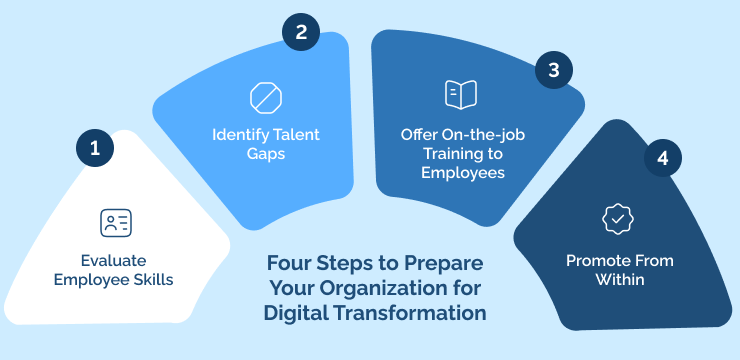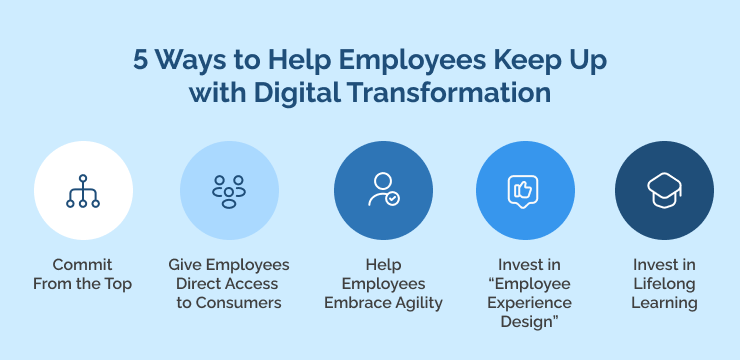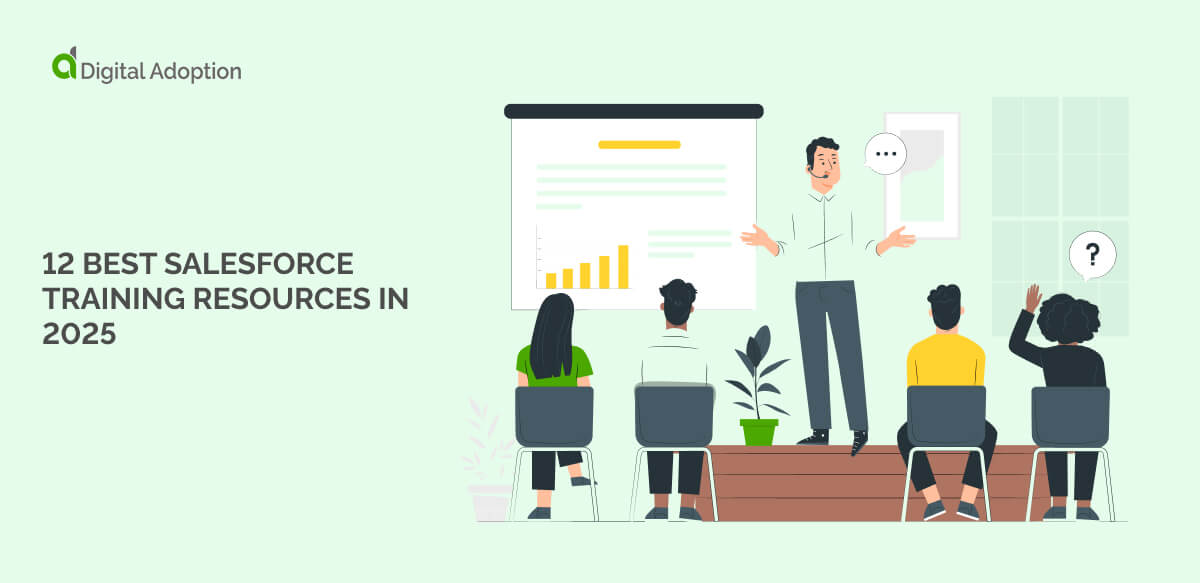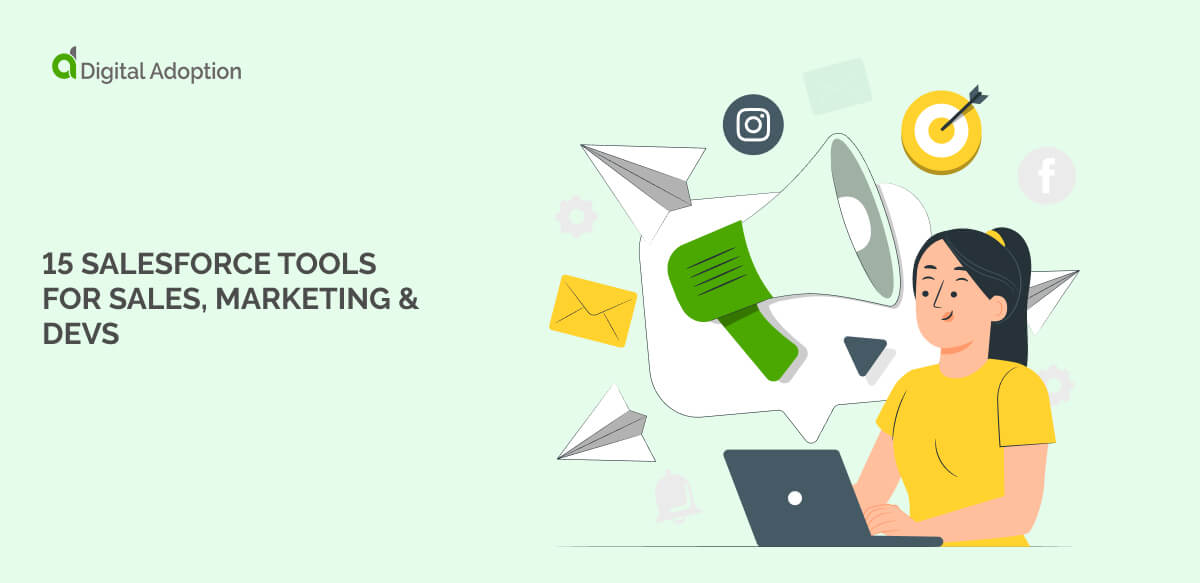Digital transformation (DX) can be challenging because it entails change at the organizational level, particularly in the digital age. It’s not merely a change in your tech stack or the implementation of new technologies; it’s a rethinking of your approach to digital as a business. While it involves the use of new technologies and the optimization of legacy systems, it goes beyond that by cultivating a foundational change that enhances and brings value to users and customers. It might be a digital transformation, but limiting its scope to the digital also inhibits the initiative’s success.
It’s a transformation that will have to occur sooner or later, with McKinsey reporting that 64% of business executives need to enhance their digital channels or build new digital businesses if they want to future-proof their organization and remain economically viable through 2023. Regardless of the pandemic, organizations around the globe have been “going digital” in recent years.
Digital communication fosters collaboration by improving internal employee engagement. Forging digital-based alliances are essential for businesses to start improving workplace culture. It also helps to boost company-wide adaptation and leads to a heightened employee experience. It’s important to remember that employees adapt to digital transformation differently. Training employees to make digital improvements will enhance company-wide communication and creates a dynamic environment with tangible benefits.
Digital has been ingrained deeply into the way business is done that the question of digital transformation is only a matter of when. If your company isn’t prepared for the changes a digital transformation initiative brings,
- Four Steps to Prepare Your Organization for Digital Transformation
- 5 Ways to Help Employees Keep Up with Digital Transformation
- Technology Acceptance & Attitudes Toward Technological Change
- The Impact of Digital Transformation on Work-related Outcomes
- Group Dynamics and Organizational Factors Impacting Digital Transformation
- How To Nurture A Digital Workforce
- Digital Transformation Keeps on Giving (If You Get It Right)
Four Steps to Prepare Your Organization for Digital Transformation

Digital transformation isn’t as simple as some might think because it affects everybody across the organization. Everyone has to be on board. Employees must have the proper mindset before embarking on their digital transformation journey.
We’ve outlined four steps below to help make your organization’s transition as seamless as possible.
- Evaluate Employee Skills
Before determining what digital skills and specializations your organization needs, look first at what skills your employees already have and what value they bring to the business. Not all companies have the human resources, skills, and infrastructure for big data, cloud computing, and even eCommerce. These are the top priorities today, and the sooner your company adapts to these technologies, the better.
Being open to continuous learning is also vital because these technologies constantly evolve, and new technologies are always around the corner. You should consider artificial intelligence (AI), machine learning (ML), and cybersecurity.
- Identify Talent Gaps
After identifying your workforce’s skills, you should look at your business as a whole and see where there are gaps skill-wise. Today’s economy is digital, and ensuring there are no digital talent gaps will help provide a competitive edge to your organization.
Your digital strategy should address your business objectives, and digital talent needs to ensure a sustainable solution. If your workforce isn’t prepared to handle digital transformation, you might need to seek outside talent.
- Offer On-the-job Training to Employees
If your employees lack the necessary digital skills, it doesn’t mean they have to stay that way. Short of attracting digital talent, you could also promote continuous learning programs for employees wherein they can learn the needed skills that will help in your digital transformation initiatives. Encourage ongoing employee training by fostering an environment that prioritizes and incentivizes learning. It would be best if you also created a clear career development path for employees to track their progress and see where they’re going.
- Promote From Within
Promoting deserving employees boosts employee morale and helps save money on recruitment and hiring costs. Internal promotions are also significantly less expensive than hiring someone externally for the same role. Providing your employees opportunities for training and career development also develops loyalty and encourages them to give their best for the continued success of your organization.
One thing you can do to prove you trust your employees’ capabilities is to make them part of the organization’s digital transformation initiatives. This will empower them to be instigators of change and innovation within the organization.
5 Ways to Help Employees Keep Up with Digital Transformation

To help employees keep abreast of digital transformation trends, they should be made aware of the current consumer products landscape. Through the years, consumer products have been leaning toward digital approaches that call for tools and skillsets that can respond to the needs of the always-connected consumer. Below are a few ways you can help your workforce respond to the call of the times.
- Commit From the Top
For transformation efforts to be successful, they should always be top-down initiatives. However, people outside the leadership teams should also be involved in implementing organizational changes. Creating a change management plan will also help manage the transition process because it will document and help monitor and control changes in budget, schedule, scope, and other resources. Consequently, a documented strategy will minimize the impact of change on employees, customers, and the business as a whole.
A few years ago, British utility company Centrica began adapting its business model by putting employees at the heart of the transformation. “One of the great things I love is that when you walk into our space, it is collaborative. You can’t tell the difference between the teams – we’re all centered around the product.” Said Paul Roberts, Head of Digital.
This shows that a combined, top-down approach helps to implement new digital communication, inspires valid digital connections, and can encourage collaboration online. Both online and offline communication can be unified, keeping employees connected through their own devices. Employees tend to make digital advances when they utilize digital tools to complete everyday tasks. Digital transformation involves moving towards immersive training programs that cover the needs of the entire enterprise.
- Give Employees Direct Access to Consumers
Providing Your products or services directly to consumers allows you to gain insight into customer behaviors that lead to sales and the factors that drive those behaviors. Easy-to-set-up digital tools are available to help make this happen, including eCommerce software, search engine optimization (SEO) tools, and social media listening tools. Maximizing these solutions, however, requires a shift to a digital-first organizational structure and a customer-centric mindset.
- Help Employees Embrace Agility
The road to digital transformation is a fast-paced highway that can’t be accommodated by traditional business road maps created with minimal digital consideration. As such, a high level of agility is needed to ensure the success of the digital transformation. This shift can be enabled by day-to-day activities or processes that allow employees to work faster and more efficiently. These activities will help make the changes tangible and encourage employees to embrace the shift to a more agile approach.
It’s no secret that engagement drives digital adoption. Agile and flexible work schedules help employees adapt to new ways of working while giving them breathing space to learn and adapt to new processes. Older employees struggle with change, especially when implemented digital changes are happening quickly. Try developing an immersive training program specifically targeted at older employees less responsive to digital change. This is an excellent way of ensuring that employees develop the necessary skills to keep up with the fast-paced, dynamic environments of the digital age.
- Invest in “Employee Experience Design”
Employee experience should be part of digital transformation initiatives because this helps attract and retain valuable and mission-critical talent. Today’s workforce has been taking on new and constantly evolving roles, leading to new motivations and expectations. By leveraging journey maps, user research, and user personas, you can improve the overall employee experience and turn employee milestones into company milestones.
- Invest in Lifelong Learning
In light of the drastic changes in the business landscape brought about by the pandemic, employees must embark on their own journey of continuous learning. As roles change and new tools become available, learning has become a fundamental part of being a valuable employee.
Support employees in this journey by providing frequent and regular upskilling programs delivered in easily digestible formats that fit their work schedules. New digital roles can be pretty demanding, so consider this when scheduling training programs and learning initiatives.
Technology Acceptance & Attitudes Toward Technological Change
According to the technology acceptance model (TAM), the success of digital adoption is based on positive attitudes toward perceived usefulness and ease of use. The main challenge toward full digital adoption is the investment in full-featured systems while only being able to use a portion of its capabilities. These features are deemed vital to the business.
There’s some confusion regarding the exact definition of digital adoption. Some perceive it as simple as using a mobile device’s business intelligence (BI) tools. In contrast, others refer to implementing robust business platforms that affect core business processes.
There are also those that question the adoption of new technology by virtue of the effectiveness and reliability of old and tested systems and solutions that have stood the test of time. This dichotomy puts those that push for digital transformation and innovation at opposite ends from those who want consistency and efficiency.
The Impact of Digital Transformation on Work-related Outcomes
While digital transformation can be extremely challenging for businesses, its benefits are more than enough proof that it’s something worth doing. It’s a complicated process that can help improve almost every part of an organization.
The main problem most companies face is the more significant focus on “digital” instead of “transformation.” Digital transformation is the reinvention of a business that starts at its core. It requires a change in mindset and a digital-first work ethic.
Essentially, digital transformation is all about knowledge sharing and improved internal communication between different organizational business units. Enhancing employee engagement can significantly improve how teams work together and help them break out of their silos and work toward true collaboration.
Group Dynamics and Organizational Factors Impacting Digital Transformation
Group dynamics is vital in digital transformation success because it involves several individuals working toward a common goal. A good dynamic ensures that each group member will perform as expected and work toward the goals set by the group. In digital transformation, several factors affect the work dynamic in an organization, including the leadership within the group, the individual personalities of the group members, the life cycle of a group, and how effectively the group communicates.
Together, these factors create a set of organizational factors that significantly affect digital transformation efforts. How people perceive digital transformation substantially affects how easily they will accept the changes. Recognizing ways to ease the transition should be a focus of leadership.
Focusing on enhancing the group dynamic within the organization will minimize work disruption and help employees integrate digital tools and solutions into their workflow. Every employee must know that collaboration and cooperation are critical components of a successful digital transformation. It’s the shared goal toward which everyone in the organization should work.
How To Nurture A Digital Workforce

The focus of digital transformation shouldn’t solely be on the digital solutions used and the processes involved. Organizations should endeavor to empower employees to become problem solvers, with digital solutions acting only as tools to support employee-driven initiatives. Leaders should help foster an environment that’s supportive of continuous learning.
Employees aren’t hesitant to use technologies or tools unfamiliar to them. They are instead encouraged to learn more about them and how they can be leveraged to increase productivity and efficiency. Companies should aim to make their employees empowered problem solvers, Dery said, by creating a supportive environment of continual and rapid learning where they can leverage technologies to solve unforeseen problems. These employees need the confidence to solve problems and the skills to work effectively in a digital world.
Below are a few ways to help your employees become more digitally inclined and proficient.
Manage the Balance Between Technology and Employee Skills
Digital tools are only as good as the skilled people who use them. Thus, having the “right technology” means an organization should also have the “right people”—people proficient in using these digital tools. It’s not enough, however, for employees to simply know how to use these tools. They should also be able to identify and solve problems and change their workflow to improve business outcomes.
Investing in one without investing in the other can be problematic for companies because it hinders efficiency and pushes them into a reactive instead of proactive approach. If a company focuses too much on technology acquisition without developing the necessary skills of employees, the technology becomes an obstacle instead of an enabler of digital transformation. On the other hand, focusing too much on developing high digital skill levels leads to stop-gap solutions and frustration if available systems or platforms can’t support ideas.
Accelerate Employee Adjustment to New Roles, Not Just New Tasks
The digital transformation process’s transition phase entails organizational structure and operations changes. Consequently, this also leads to changes in employee tasks, but leaders should help employees understand that this change affects their workplace roles and not just their tasks. Leaders should explain to employees that there may be some new skills or capabilities that need to be learned to help in the mastery of the new work. Also, they should clearly describe how roles are changing and expect some emotional challenges as employees come into terms with their unique identities.
Have the Right Leadership in Place
Digital transformations should have a capable leader at the helm who has both technology and business skills. The problem is that someone like this can be tough to find. One approach you can take is to hire two leaders—one to lead the technology side of things and the other to handle the business side. These two leaders will work toward the same goals, with different KPIs related to their area of expertise.
Digital Transformation Keeps on Giving (If You Get It Right)
Done right, digital transformation will push a business to the next level and future-proof it with the help of new and innovative solutions.
The transformation, however, should come from within and involve all members of an organization. There will be a transition period, more than one, in fact because digital transformation is an iterative process.
It’s an ongoing thrust that aims to keep your business and people on their toes and ready to face the challenges of the new, digital world.







![18 Examples of AI in Finance [2025]](https://www.digital-adoption.com/wp-content/uploads/2025/06/18-Examples-of-AI-in-Finance-2025-300x146.jpg)
![14 Examples of AI in Manufacturing [2025]](https://www.digital-adoption.com/wp-content/uploads/2025/06/14-Examples-of-AI-in-Manufacturing-2025-300x146.jpg)




